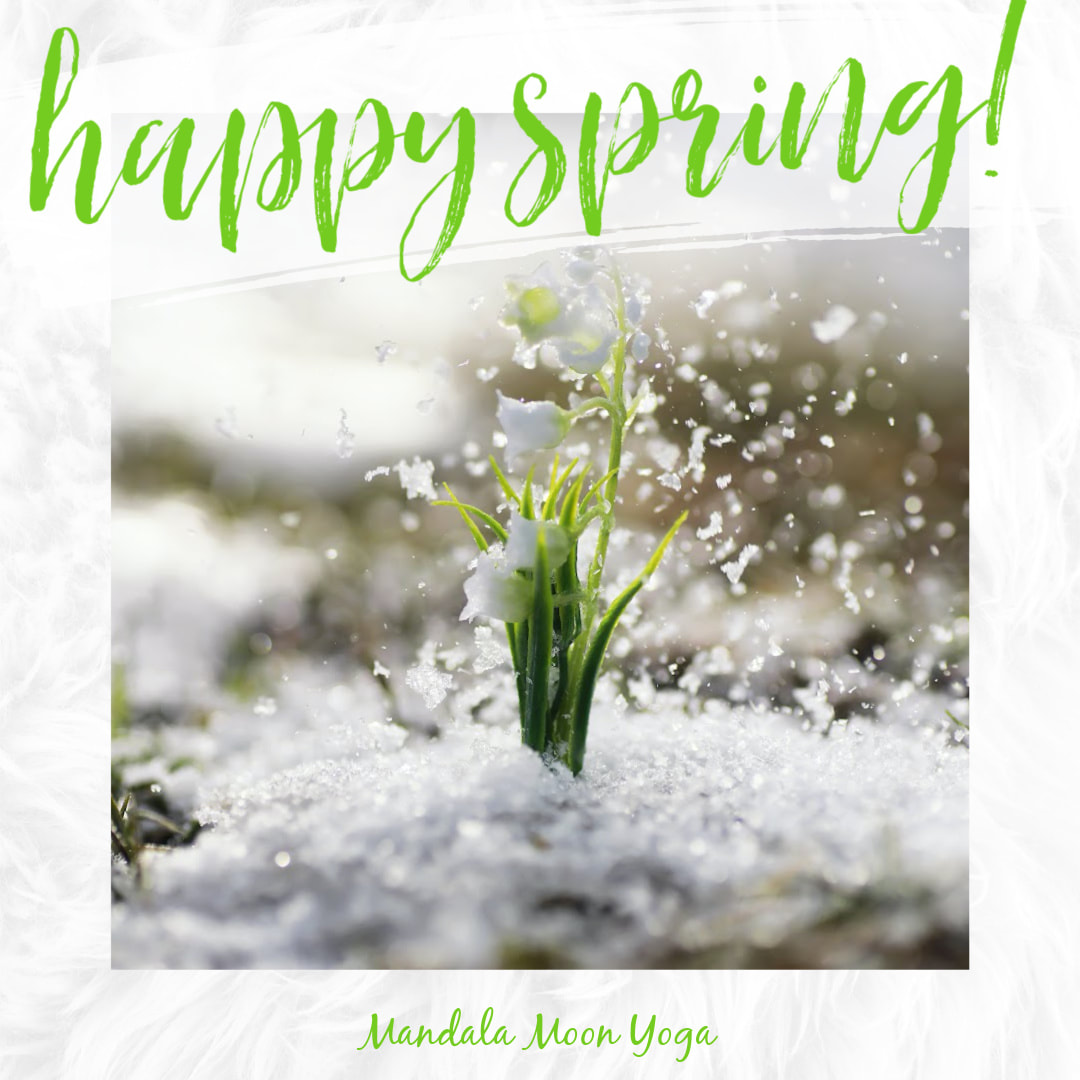Yoga’s sister science, Ayurveda (literally, “the science of life”), is all about living in harmony with nature. So when the seasons shift, there are some shifts we can make, too, to help us adjust. There are only three seasons in Ayurveda, and they coordinate with the three doshas: Vata (made up of air and ether), Pitta (made up of fire and water), and Kapha (made up of earth and water). In the Northern Hemisphere, the cold, wet late winter and spring are considered Kapha season. As the snow melts into the earth, we have lots of water and earth; in other words, mud. It’s a heavy, cold, muddy season.
A basic Ayurvedic principle is that like increases like, and opposites balance. We are always seeking a balanced state of health without an excess of any of the qualities known as gunas.
How we approach balance varies from person to person, because we each have different levels of the three doshas, but this post is to offer some basic Ayurvedic advice that will apply to most people during Kapha season (late winter and spring).
- Eat more food that is light, dry, and warm to balance the heavy, wet, cold season. Consider things like steamed vegetables and light soups.
- Eat less heavy and cold foods such as fried foods, dairy, and sweets.
- In general, favor foods that are pungent and spicy, bitter, and astringent as well as light, dry and warm, and avoid or reduce foods that are sweet, sour, salty, heavy, cold, and oily.
- Consider adding more play and activity into your lifestyle. The introspective hibernating of winter is ending, and it’s time to become more active. Try a new exercise class or get outside for some walks, bike riding, or hikes.
- Your yoga can change, too. You may find that your yoga teacher is slowly adding more flow and picking up the pace in your yoga class. If you usually practice yin or restorative, consider a multi-level or flow class.
- Cooler spring days are ideal for relaxing in the sauna to sweat out any excess moisture and release toxins.


 RSS Feed
RSS Feed